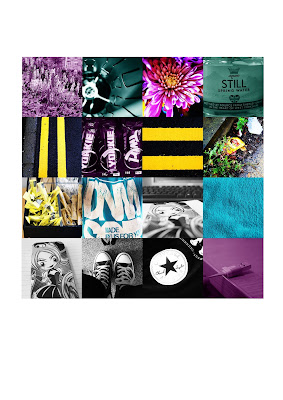Evaluation
First off
we started with the brief on what perspective was and what kinds of
perspectives are used in photography, we also learnt about depth of field,
small apertures, focus, composition and wide angled shots.
After that I did
some research on some forced perspectives to get some inspiration on what I could
do when shooting my images. we were then sent out to create our own forced
perspective images.
After I
took my shots I then went on to photoshop to see how they looked and to also
see if I wanted to edit them.Although I
wasn’t allowed to manipulate the images considering it would defeat the whole
point in getting the forced perspective right when shooting them. The things
that I could’ve edited were levels and color but I chose not to because I wanted
my photos to be unedited/raw.
The next
task I did was a follow on from the previous task (where I learnt about the
different perspectives) next I had to go out and create some perspective shots.
For my aerial/atmospheric I had to create a minimum of four images 2 for each aerial/atmospheric.
Overall I would take a total of 10 images for linear, dwindling and aerial.
After taking my photos I had to put them on to my computer and create contact
prints on photoshop.
I also had to select my best ones from the shoot.
For the
next task we learnt about film cameras, film and the darkroom. By learning this
I found out about the different types of film and that we would be shooting in
black and white film for our project. For the darkroom I learnt about the
different type of chemicals and what the rules are in the darkroom. After the
brief about film we then were given a film camera to see if we had any basic
knowledge on how to use one.
Luckily I had used a film camera before so I checked
to see if there was any film in it and what the focus, aperture and depth of
field was. After that Mike and Gemma explained everything about using a film
camera. The first thing they taught us was how to load the film in to the
camera then how to readjust the aperture, focus and depth of field.
Task 2 was
research about film and the darkroom. I had to answer simple questions about
film cameras like what SLR stands for and what are the main components of a
film camera. Next I had to list the names of black and white film
manufacturers, what sizes there were, frame counts and film that comes in
different speeds.
The last
part of my researched focused on the darkroom; the questions consisted on: what
is the name of the red light used in the darkroom and what the main components
of the enlarger are. The final part of this task was to create a timeline of
the procedure I would go through when doing my photographic prints and also the
procedure of my final prints.
My next
task was a little task on knowing what components are on a film camera and
enlarger. I had to input on the diagram what parts were on both. My next task
was the trip evaluation where I had to evaluate the trip I had gone on to take
my final shots for my perspectives. The first section included me saying if the
location was suitable for my perspective shots and many other aesthetical
things. The next section was about the technical side of taking my images. For
example was it challenging to use analogue camera.
The
darkroom task included me getting my film developed so I could produce the
images I had taken on the trip. Firstly I did my contact prints to see how my
photos would look as a whole when being produced in the darkroom. Then I did a
practice print on an image to see how they would turn out as a 7 x 5 format. This
is where I learnt how long I would need for the exposure of my image and how to
make my borders even.
My final prints consisted of me choosing four images and
then enlarging them and developing them. This seemed easy at first but
previously I had some issues with getting my borders correctly.
Luckily after
using 2 sheets of paper to test my borders I was set to go do my final images.
I found that using an enlarger was pretty fun because it’s very similar to
using a projector when displaying film.
After producing
my images I had to scan my film in to get two of my final prints to do a
comparison. The comparison would look at the differences between both versions
of Images. This is where I talked about focus, darkroom settings and overall
looks of the images.
My last task was an evaluation of my entire project which
would look at all of my tasks I had previously completed.




























